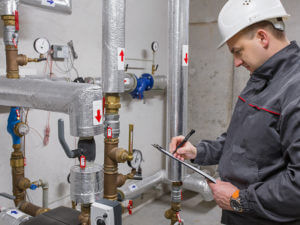The air quality in your home is something that is often ignored. Most homeowners are more concerned with the temperature and how much energy they lose through inefficiency or poor insulation.
However, air quality is a significant factor to how comfortable your home is to your family and to visitors. Air quality issues can impact your health over time. Here are some things you can do at home to gauge the health of your home and some common remedies to help you and your family breathe a little easier.
What can affect air quality and how can I fix it?
Mold – Mold infestations are pretty obvious, growing black spots on walls, ceilings and baseboards, water spots, or areas in your house that are particularly damp. Check all moist areas of your home first such as your attic, basement, and crawl spaces. Look at your walls, cabinets, and baseboards and pay special attention around and under appliances like refrigerators and washing machines. It has a pungent smell that is easy to spot when it is confined to one area of your home. Not all mold can easily be seen and sometimes a mold problem isn’t entirely obvious until you start to experience health issues. If certain areas of your home make you feel listless or congested, it is possible that the area contains mold.
Some molds and mildew can be treated but if you suspect your house has a mold issue, the only way to remove it is to call a professional. They can do a thorough test of your home and find the root problem.
Carbon Monoxide – This is a deadly gas that is odorless, colorless and tasteless and is created by appliances like space heaters, gas stoves, furnaces, heaters, and refrigerators if they are poorly ventilated. Most smoke detectors have the ability to check for carbon monoxide but you can buy CO detectors to keep in areas such as your basement or near areas that have lots of appliances. If your alarm goes off then there are dangerous levels of CO in the air and you must get out of the home immediately and contact your fire department.
Dust – When things begin to break down, rocks, plants, shoes, food, etc. particles of it will be released into the air. Dust also contains dead skin cells from people, insects, and pets. We also create dust when we smoke indoors. All this stuff will accumulate in the air, cling together through static electricity, and begin to cover surfaces.
The air filter in your HVAC system will remove a good portion of the dust in the air, but another good strategy is to control the humidity levels in your home. An indoor humidity between 40 and 60 percent is optimal to keep dust mite populations down and dust from accumulating.
John’s Service and Sales takes your indoor air quality seriously and if you suspect an air quality issue, we can test your home and suggest how best to alleviate whatever issues are found. Whether you need an upgrade to your HVAC system, an air purifier installed, a humidifier or de-humidifier, or an upgrade to your ventilation system. Call us today and start improving the air quality in your home.



